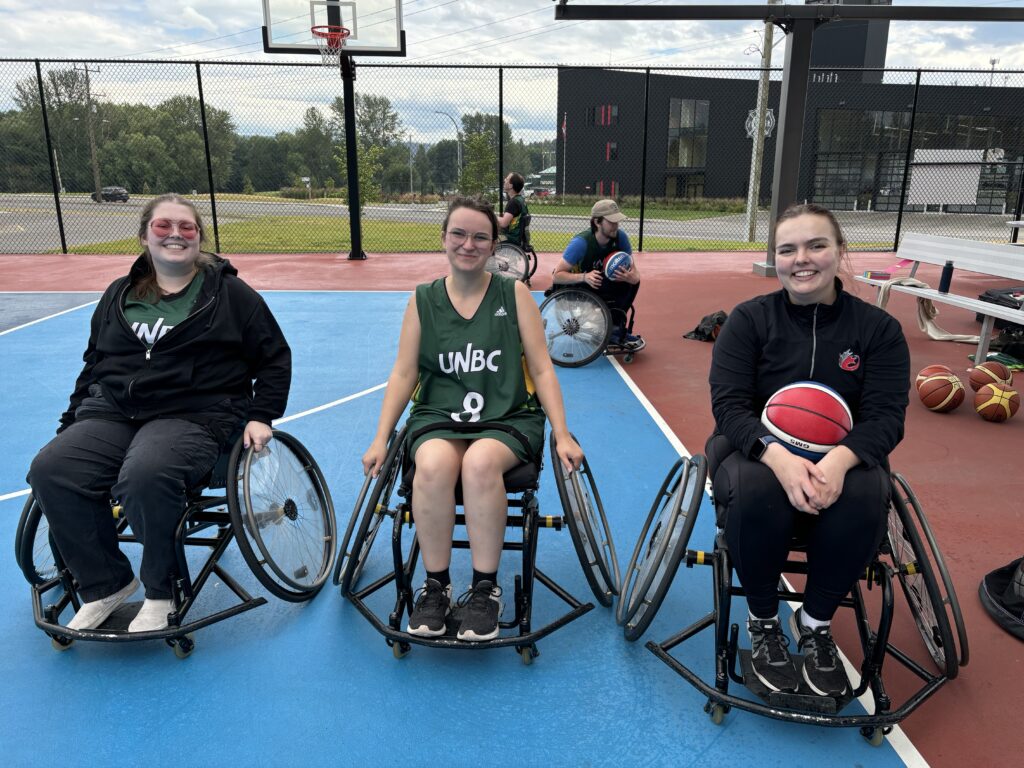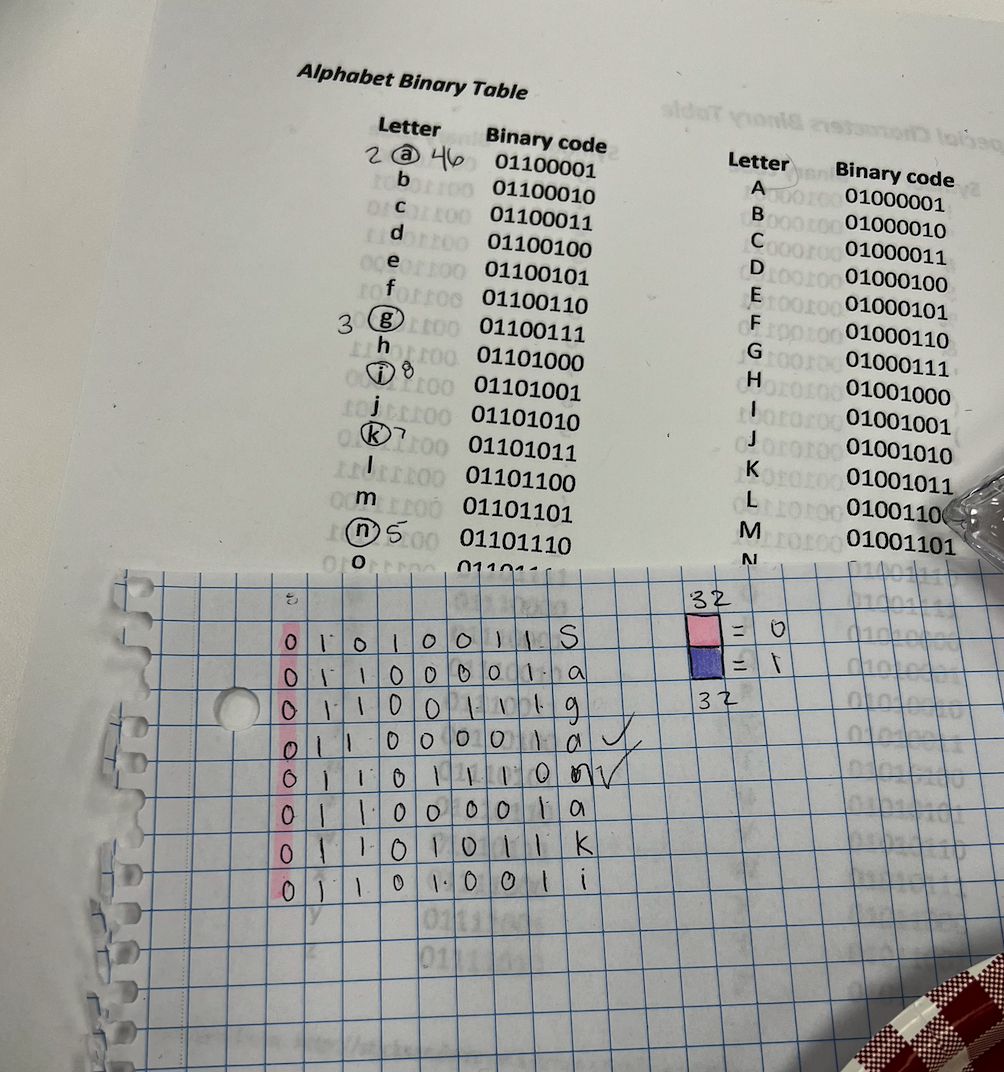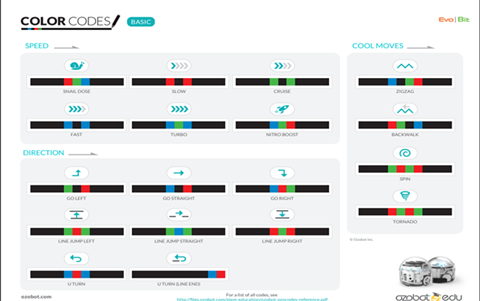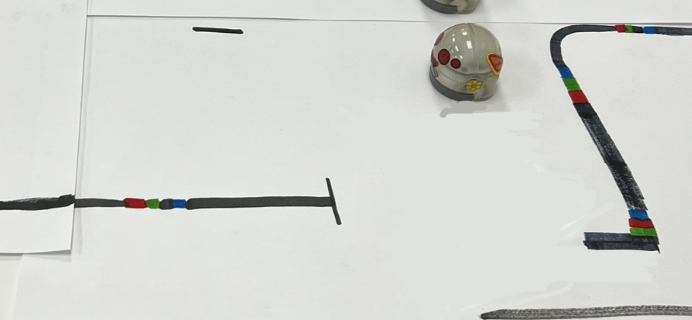
Understanding Language: Why it Matters and How we Teach it to Diverse Learners
Language is the heartbeat of learning, it is the tool that shapes how we humans think, how we express ourselves, and how we connect with the world around us. Language is a huge component of who we are as individuals in academia but also in every other aspect of life.
To become proficient readers and users of language, students require two key skills: language comprehension and decoding. Decoding allows students to read (decode) the words on the page, while comprehension allows them to make sense of what those words mean. One essential tool for building decoding skills is phonics (the method of teaching students how letters and combinations of letters correspond to sounds). Through systematic phonics instruction, students learn to “sound out” words, breaking them into parts they can recognize and blend (such as how A says “ah” or “Eh” depending on the circumstance). This is especially important for early readers and for students who are learning English as an additional language, as it helps them connect the visual symbols of print to the sounds of speech. If a student can decode fluently but does not understand the vocabulary or syntax, they will not understand or grasp the full message. Conversely, a student may have strong listening and verbal language skills, but if they are unable to decode the print, they will struggle with reading. True literacy develops when both skills are present and connected, enabling students to engage with text meaningfully and confidently.
It is important that we, as educators, study language. As an educator one must consider the How? How do the building blocks of language come together? And, crucially, how do we make language accessible and powerful for every learner in today’s diverse classrooms? In this post, I will give you a look into the essential concepts every teacher should be aware of when planning and thinking about language instruction, with practical strategies grounded in evidence-based practice.
Why Study Language?
Studying language is not just about grammar drills or vocabulary tests. It is about understanding the system that underpins communication and learning. Language is more than a tool for communication; it is a complex rule governed system which is the lens through which we understand the world (Gee, 2015). As educators, we must recognize that English is not a monolithic language (united and difficult to change) but a tapestry of dialects shaped by immigration and colonialism. Students may speak African American English, Asian-American English, Indigenous English dialects, or other nonstandard forms, each with its own grammatical rules and cultural significance and yet still be speaking a valid language (Smitherman, 2006). These dialects are not errors but expressions of a rich linguistic heritage. When educators devalue a student’s home dialect, it can lead to feelings of alienation and reinforce harmful social hierarchies tied to race and class. Understanding and valuing linguistic diversity is crucial for fostering an inclusive classroom environment. When teachers understand how language works, they can better support learners who come with varied backgrounds, dialects, and abilities.
What is Orthography and What is it Role in Language systems?
Orthography is the set of conventions or the ‘system’ in place for writing a language. This includes aspects such as spelling, punctuation, capitalization, and more. It is the bridge from spoken to written language and it is crucial for literacy development. It provides conventions that enable reading and writing but also carries cultural and educational weight. Delpit (2006) highlights that standard orthographic practices often reflect dominant cultural norms, which can marginalize students who use different dialects or languages. Recognizing this helps and allows teachers to design inclusive literacy instruction that respects students’ linguistic backgrounds.
Mastery of orthography helps students decode texts, write clearly, and engage confidently with academic content. As orthography reflects language rules, explicit teaching helps all learners, (especially those with dyslexia or who are English Language Learners) build decoding and encoding skills. How can you introduce orthography to your classroom? Below I have outlined some tips and tricks to integrate orthographical instruction into your classroom as well as some possible activities that you can utilize to best instruct your students.
Tessa’s Quick Tips: Orthography
1) Start with Language Awareness, Not Correction
- One of the most powerful ways to introduce orthography is by helping students notice language, not just memorize rules. Before jumping into “right and wrong” spelling, encourage open discussions about the quirks of English. Ask questions such as, “Why do we write ‘knight’ with a ‘k’?” or “What do you notice about these different spellings of the same sound?” (ex. Tough v. Fluff). Questions such as these help to build curiosity and confidence. A further activity is to challenge kids to practice sounding things out independently before you jump in and correct them, the more trust and patience you give them the more confidence they will develop over time.
2) Validate Home Languages and Dialect
- Students come to school with rich language backgrounds that they bring from their homes. Instead of seeing dialects or “non-standard” spellings as deficits, treat them as assets that we can all learn from. Discuss how texting, regional dialects, and other languages influence how we write and speak by displaying how language is not a stagnant object but something that is continuously developing. For instance, one could compare the word variations of “gonna” vs. “going to” and talk about when and why each might be used; Alternatively you could look at outside languages being integrated into our English Language (ex. German words ‘poltergeist’ and ‘Kindergarten” and French words “cuisine”, “en route” and other words influenced by foreign tongues (honourable, cliché, diva, etc).
3) Teach History and Logic Behind Spelling
- English spelling often seems irregular, but many “weird” spellings make sense once you look at their history. Words like “colonel”, “Biology” and “receipt” have French or Latin roots. The English language is made up of all the other languages that surround and develop alongside it, such as Gaelic, German, and French etc. Teaching etymology (word origins) therefore can help demystify spelling and deepen vocabulary understanding among your students.
4) Use Visuals and Patterns
- Visual aids are a game-changer. In my language courses, I always enjoyed when teachers had images on the wall with the word that is depicted in the language displayed in both English and the language I am learning. Providing students context allows for new words to stick and feel useful.
- Highlight root words, affixes, and spelling families with colors or diagrams. A chart showing how “sign,” “signal,” and “signature” all connect helps students see patterns instead of randomness.
5) Embed Orthography in Real Reading and Writing
- Avoid isolated spelling drills and tests. Instead, use journal prompts, short stories, or class novels to explore orthography in action. Ask students to notice spelling patterns or punctuation choices in their reading and apply them in their writing. Task students with highlighting words they don’t know to do personal investigations on. Have students attempt to determine the definition of the word in context by ‘reading on’ and using surrounding text.
As I am a High School educator, I can only recommend orthographical practices that I too would use with my secondary students. After some consideration, I have determined that there are two great activities you can run with High School students of any grade that will benefit them in their orthographical knowledge:
- Morphological Mondays!
- How to do it:
- Pick a Weekly Root or Affix:
Choose academic or common morphemes (e.g., tele, photo, sub, inter, -logy, -graph, thermos-).Introduce with a Mini-Lesson (5–10 mins):- Definition and origin (e.g., tele = far, from Greek)3–5 common words using that rootOne surprising or funny example to make it stick
- “List as many words as you can with this root/affix”Bonus: Have them create a “Frankenword” using the root, then define it
- Science: biology, thermometersSocials: geography, democracyEnglish: television, autograph
- Create a Morphology Wall or interactive notebookHave students track roots and affixes in their independent reading
- Pick a Weekly Root or Affix:
- Offer sentence starters for using new words in context
- How to do it:
- Fix or Flex? Game
- Purpose: Teach grammar and spelling conventions and when it’s okay to break them.
- How to do it:
- Prepare Sentences:
Create 6–10 example sentences. Some have true spelling/grammar errors (fix), others break the rules for effect (like in poetry, song lyrics, or social media) (flex).- Example:
- “wHaT iS eVeN hApPeNiNg rn.” → FLEX
- “I before e except after c… or when it sounds like ‘a’ as in ‘neighbor’?” → FLEX
- “Their going to the mall later.” → FIX
- Example:
- Play as a Game:
- Show one sentence at a time on the board or handout.
- Students vote: Is this a “Fix” (actual error) or a “Flex” (stylistic/rhetorical choice)?
- Discuss each one: Why is this wrong? Why might someone write it this way anyway?
- Wrap-Up:
- Ask students to bring their own “Fix or Flex” examples from their world.
- Reflect on how understanding context affects spelling and grammar use.
- Prepare Sentences:
- How to do it:
- Purpose: Teach grammar and spelling conventions and when it’s okay to break them.
- Differentiation Tips:
- Use visuals or audio examples (e.g., rap lyrics, memes)
- Allow group work so students can talk through tough calls
- Scaffold with a checklist: “Is it communicating clearly? Is it following expected rules? Is it meant to stand out?”
Orthography simplified is just the system of written language which provides the bridge between spoken language and literacy (Sedita, 2022). It reflects and highlights the cultural norms of a society and while doing so can marginalize those students who come from a different language or dialectal background. Recognition by teachers that all dialects are valid helps us as to create an inclusive class community of language users who recognize that they are learning a new language dialect together – the dialect of academic English.Understanding is just one piece of the literacy puzzle. To truly empower students as readers and writers, we must also focus on how they build, use, and relate to vocabulary in meaningful, culturally responsive ways
Please feel free to check out my brochure on orthography here:

Building a rich vocabulary and the inclusive and research-based strategies that work.
Helping students grow their vocabulary isn’t just about memorizing word lists; it’s about creating meaningful connections between words, context, and culture. In our classes, we will need to respond to linguistic diversity, which means that in the instruction of a new vocabulary we are also affirming students’ home languages as valid and meaningful systems of communication that reflect cultural identity and lived experience (Delpit, 2006). Effective vocabulary integrates new terms into students’ lives and learning in ways that feel purposeful and inclusive. This approach not only improves individual retention but also deepens comprehension and encourages authentic engagement with language in all its forms.
One powerful strategy is culturally responsive pedagogy (CRP). Rather than treating language as a one-size-fits-all system, CRP values students’ linguistic and cultural backgrounds as assets. This method connects new vocabulary to students’ personal experiences and cultural knowledge, helping them understand and apply words in real-world contexts. Rather than marginalizing nonstandard varieties of English, educators should highlight their complexity and cultural significance (Paris & Alim, 2017). Roessingh (2020) emphasizes that embedding vocabulary instruction within culturally relevant thematic units boosts not only vocabulary acquisition but also long-term academic achievement.
For example, in a classroom with multilingual learners, teachers might explore vocabulary connected to food, storytelling, or local celebrations of multicultural backgrounds – topics that resonate across many cultures and not just one. Students can bring in words from their home languages and compare them to English cognates or translations (ex. The German word Blumen=Flower, is this where the term ‘Bloom’ comes from for flowers in English?). This invites dialogue, builds confidence, and supports cross-linguistic transfer. Students can learn to navigate between different registers of language, like using their home dialect in conversation and academic English when doing formal writing. This approach, known as code-switching or code-meshing, empowers students to expand their linguistic repertoire without abandoning their identity (Siegel, 2006).
The Reading Rockets blog post, “Connect Students’ Background Knowledge to Content in the ELL Classroom” reinforces this by encouraging teachers to link new vocabulary to students’ prior knowledge, which is especially helpful for English Language Learners and English Dialectal Learners alike.
The quality of instructional materials also matters. According to Muñiz (2021), incorporating culturally sustaining resources, books, videos, and texts that reflect diverse identities, creates a learning space where all students feel seen and respected. This, in turn, makes vocabulary learning more relatable and powerful. When students encounter vocabulary in contexts that reflect their lived realities, it becomes easier to grasp nuance, tone, and meaning ultimately strengthening their language skills in the long run.
Incorporating culturally responsive vocabulary strategies into everyday teaching doesn’t require curricular modifications or updates, just intention. My advice is to start small; choose a weekly word with roots from a different language; invite students to create visual word maps using images that represent their experiences; or analyze vocabulary in texts written by authors from various cultural backgrounds. When instruction is both structured and inclusive, students feel seen and valued, which ultimately will boost their confidence in using academic language and see their engagement in learning deepen. Ultimately, vocabulary teaching that honours students’ identities and cultural histories builds bridges across the curriculum and lays the foundation for academic success. It turns language learning from a passive task into a dynamic, community-centered experience.
How Important is Syntax in the Development of Language?
Syntax is a fundamental tool for effective communication. In simple terms, syntax is the arrangement of words and phrases to create well-formed sentences, it is “the rules of the language that you speak” (Reading Universe, 2023). It’s not just about grammar; instead, it is about conveying meaning and tone within a phrase. Syntactic development occurs for children at a very young age, and it is one of the reasons we should start reading and speaking to our children in a non ‘babying’ way as soon as possible. Syntax, however, is not the same in all languages so it is not an automatic development for English Language Learners; Like most elements of language instruction it takes practice and guidance.
So how can you build syntactic awareness amongst your students? Read with your students from day 1! Have your student hear how language is organsised and then have them attempt to organize language in similar ways. Use mentor sentences taken from literature to help guide student development. Choose quotes that you can analyze as a class to identify how punctuation and word choice affect the tone and character voices. Ask your students questions such as “how does this sentence feel” and “What does this tell you about the character(s)/location”. Analyzing sentences from literature allows students to explore how sentence structure reflects character emotion and perspective. Further activities you can do are chunking sentences and sentence-combining.
Sentence chunking is an instructional strategy that helps students understand and internalize sentence structure by breaking sentences into manageable parts or “chunks.” These chunks often correspond to grammatical units such as noun phrases, verb phrases, or prepositional phrases. By isolating and examining these components, students can more easily understand how complex sentences are constructed and how meaning is layered.
For example, take the sentence:
“The curious child explored the ancient ruins during their family vacation.“
This can be chunked as:
- [The curious child] (noun phrase)
- [explored] (verb)
- [the ancient ruins] (noun phrase)
- [during their family vacation] (prepositional phrase)
Through this activity, students can better identify the function of each chunk, who is doing the action, what the action is, and additional details about the action. This strategy is particularly effective for English Language Learners and students with learning differences of all types, as it scaffolds comprehension and supports writing by making syntax more visible and accessible.
In comparison, sentence combining is an instructional technique that helps students develop more complex and varied sentence structures by joining two or more short, simple sentences into one larger, coherent and grammatically accurate sentence.
For example, consider these two simple sentences:
- The cat hissed.
- It saw a large dog.
Using sentence combining, students might produce:
- The cat hissed when it saw a large dog.
- Seeing a large dog, the cat hissed.
- The cat, seeing a large dog, hissed suddenly.
Through guided practice, students begin to experiment with conjunctions, punctuation, and word order, learning how small changes can shift meaning or tone in the language we use. As teachers we can incorporate sentence-combining into daily warm-ups, revision tasks, or peer editing activities. Through these activities we support BC’s curriculum focus on clear, purposeful communication and encourage students to develop a flexible writing style while also improving our students’ language development skills in the long run.
Syntax instruction opens the door to clearer expression, deeper reading comprehension, and richer writing. To truly support every learner, we must also recognize that not all students are going to enter the classroom with the same syntactic patterns or language structures. As we shift our focus from sentence structure to the broader topic of linguistic diversity, we begin to explore how students’ home languages, dialects, and cultural backgrounds shape their communication, and how we, as educators, can honour and build upon those unique linguistic assets. Classrooms should be about equitable learning opportunities and diverse community membership but what does that look like in practice?
How Do You Build Language Across the Curriculum?
Just as syntax forms the backbone of student expression, building language skills across the curriculum ensures those expressions thrive in every subject area and not just English. So, what does that look like in practice?
Strategies for Cross-Curricular Language Teaching:
- Content-Driven Language Lessons: Use content-specific vocabulary and sentence structures to reinforce both subject knowledge and literacy.
- For example:
- In science, teach the word root bio while exploring living organisms: biology, biosphere, bioluminescence.
- In social studies, explicitly model how to summarize a cause-and-effect relationship using sentence starters like “This event led to…” or “As a result of…”.
- For example:
- Collaborative Activities: Group projects, peer discussions, and inquiry work create real reasons to use academic language authentically.
- For example,
- Try think-pair-share – can be used in all academic areas
- Gallery walks – another cross-curricular activity where students can read and respond to classmates’ projects using sentence starters like “One connection I noticed…” or “This reminds me of…”.
- For example,
- Differentiated Instruction: Tailor support—offer word banks, visuals, sentence frames, and translation tools to scaffold student success.
Language shouldn’t be isolated to “English class.” When embedded into all subjects, it becomes a tool every student can use confidently. Language skills and new terminology will be encountered by students in all academic subject areas so we teachers must consider language instruction even if we are not “English” subject instructors. Even if our task isn’t to explicitly teach language skills, we must remember that all teachers are instructors of language – whether they’re solving equations, exploring history, or designing science experiments students will encounter language in all areas of school.
Final Thoughts:
The development of language is a multi-layered process. Through the processes and skill development of decoding, understanding, vocabulary, syntax, orthography, and—possibly most importantly—identity is all included. Understanding language systems and how they interact with students’ linguistic, cultural, and personal realities is essential if we wish to support all learners. Ultimately, effective language instruction involves equity, purpose, and joy.
Sources:
- Doll, T. (2025, May 24). Persuasive Language is Powerful Language [Blog post].
OpenEd blog. https://tmmacd.opened.ca/2025/05/24/persuasive-language-is-powerful-language/ - Bowers, J. S., & Bowers, P. N. (2017). Beyond phonics: The case for teaching children the logic of the English spelling system. Educational Psychologist, 52(2), 124–141. https://doi.org/10.1080/00461520.2017.1288571
- British Columbia Ministry of Education. (n.d.). English Language Arts 8 – Curriculum.
Retrieved from https://curriculum.gov.bc.ca/curriculum/english-language-arts/8/core - Delpit, L. (2006). Other people’s children: Cultural conflict in the classroom (2nd ed.). The New Press.
- Moats, L. C. (2020). Teaching reading is rocket science: What expert teachers of reading should know and be able to do. American Federation of Teachers. https://www.aft.org/sites/default/files/moats.pdf
- Muñiz, J. (2021). Embracing culturally responsive and sustaining instructional materials. Reading Rockets. https://www.readingrockets.org/resources/resource-library/embracing-culturally-responsive-and-sustaining-instructional-materials
- Paris, D., & Alim, H. S. (2017). Culturally sustaining pedagogies: Teaching and learning for justice in a changing world. Teachers College Press.
- Reading Rockets. (n.d.). Connect students’ background knowledge to content in the ELL classroom. https://www.readingrockets.org/topics/background-knowledge/articles/connect-students-background-knowledge-content-ell-classroom
- Reading Rockets. (n.d.). Sentence chunking. https://www.readingrockets.org/topics/fluency/strategies/sentence-chunking
- Reading Rockets. (n.d.). Sentence combining: A strategy for improving writing. https://www.readingrockets.org/strategies/sentence_combining
- Reading Universe. (2023, October 20). How Do I Help Students Build Syntactic Awareness?. YouTube. https://www.youtube.com/watch?v=hjP_Wg44zEU
- Roessingh, H. (2020). Academic vocabulary, writing and English language learners: Integrating Culturally Responsive Pedagogy. Journal of Teaching and Learning, 14(1), 1–16. https://files.eric.ed.gov/fulltext/EJ1275989.pdf
- Scott, C. M., & Balthazar, C. H. (2013). The role of complex sentence knowledge in children with language impairment: Implications for intervention. Topics in Language Disorders, 33(2), 91–104. https://doi.org/10.1097/TLD.0b013e31828f5b89
- Sedita, J. (2022). Culturally responsive literacy instruction. Keys to Literacy. https://keystoliteracy.com/blog/culturally-responsive-literacy-instruction/
- Siegel, J. (2006). Language ideologies and the education of speakers of marginalized language varieties: Adopting a critical awareness approach. Linguistics and Education, 17(2), 157–174. https://doi.org/10.1016/j.linged.2006.08.002
- Syntax matters: Sentence combining. (2020). The Writing Revolution. https://www.thewritingrevolution.org
*All graphics were made by me, Tessa Doll, by use of CANVA.com



















